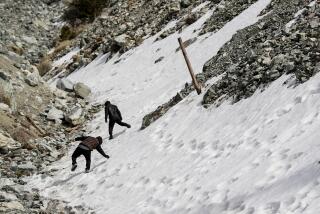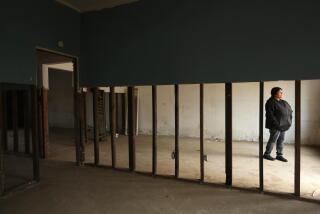Idyllwild prized its isolation. Now, with the roads into town wrecked, it feels all alone
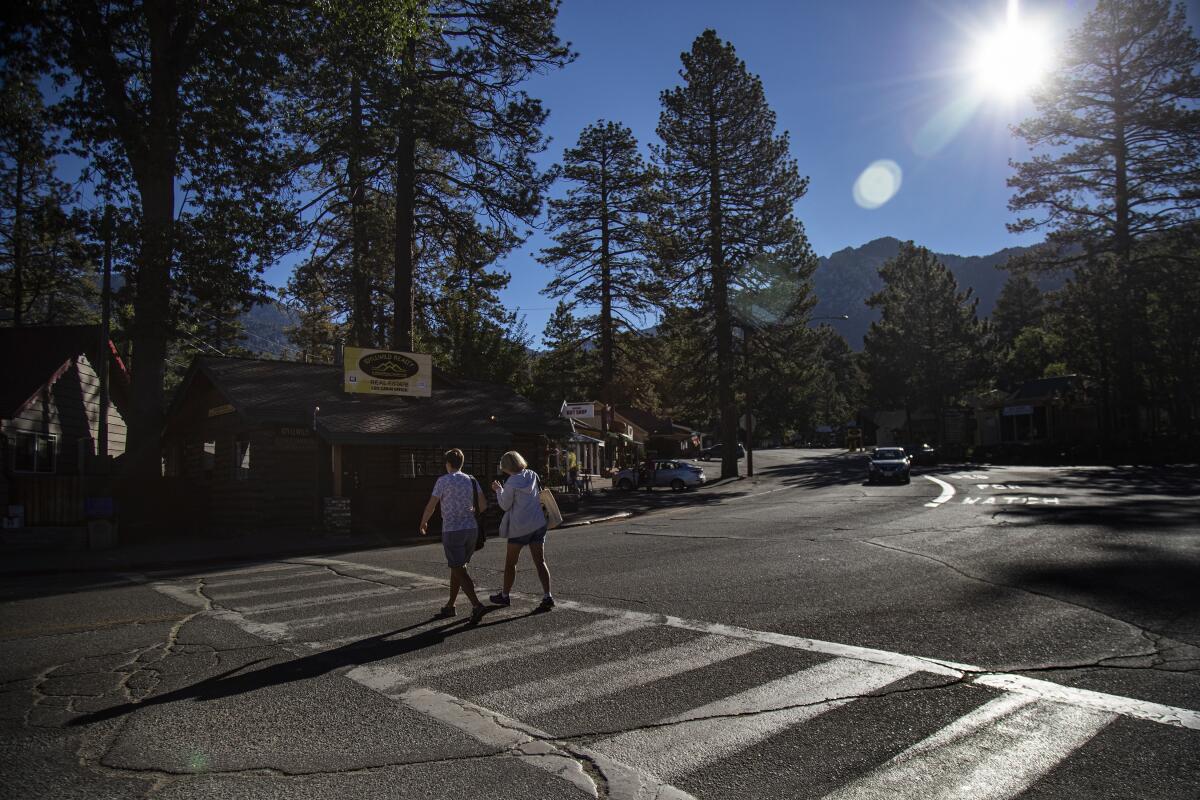
In this mountain community with the dreamy self-image, politics once focused on things like excessive flyovers by commercial airliners, the proliferation of stray pets and the alleged unfairness of a grocery store’s DVD kiosk competing with the town’s beloved video store.
Idyllwild’s causes celebres tended toward high passion, but usually without a life-altering wallop. That changed in a seeming instant five months ago, when record-setting rainfall washed away one main road to the community and left another severely damaged and available only part of each day.
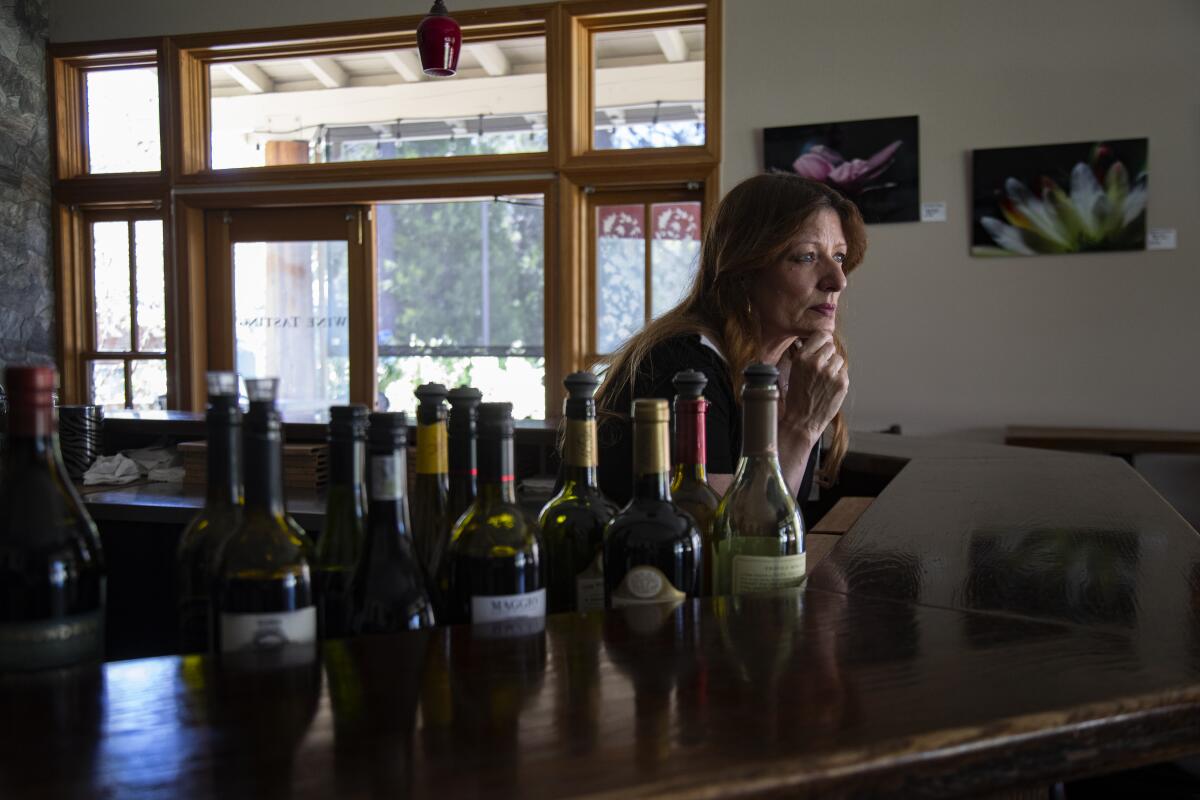
Now, the town of 3,380, which calls itself “the home of adventure, music, art and harmony,” is bereft of many of the visitors who power the tourist economy. It’s also missing the easy access to the supplies, services and labor provided by the “flatlands” below. Locals, who seemingly had outwitted madding civilization, now fret over doctors’ visits delayed, commutes doubled or tripled and cash registers rendered mute.
The avalanche of challenges has been visited on a town that already endured a frightening 13,000-acre wildfire last July, spiking anxiety and fears about whether Idyllwild is prepared to face a truly existential threat.
A community that prized its isolation now feels a bit too alone.
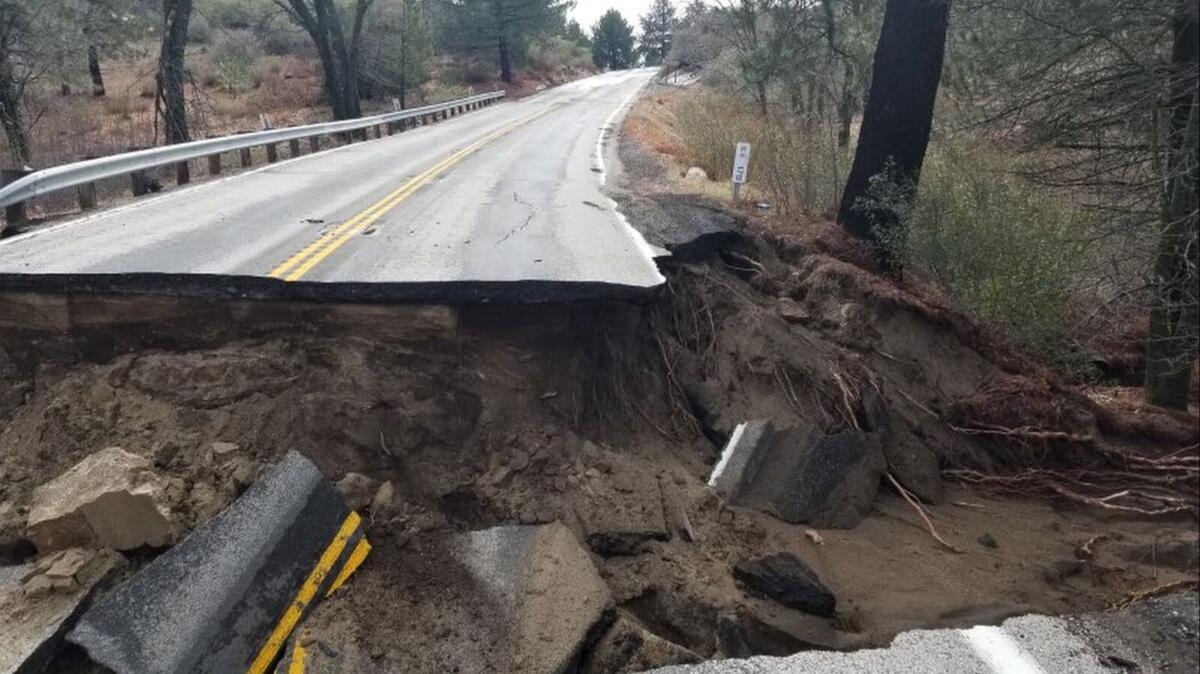
“We are making just enough money to pay the bills,” said Rajiv Panchal, owner of the Idyllwild Bunkhouse, a motel that sits on the crippled highway on the north side of town. “Now, every day we are asking, ‘For how many more days can we keep going?’”
But Panchal and other Idyllwildians express a determination to hang on. “It just comes back to the magical thing about Idyllwild,” said Dora Dillman, a real estate agent who has lived here for more than 40 years. “People who are drawn to it just can’t stay away.”
The troubles began a year ago, when the Cranston fire burned more than 13,000 acres and forced the evacuations in Idyllwild and other communities in the San Jacinto Mountains of Riverside County.
The fire also reduced the ground cover holding the soil in place. Then, on Valentine’s Day, an “atmospheric river” dumped as much as 10 inches of rain in just 24 hours.
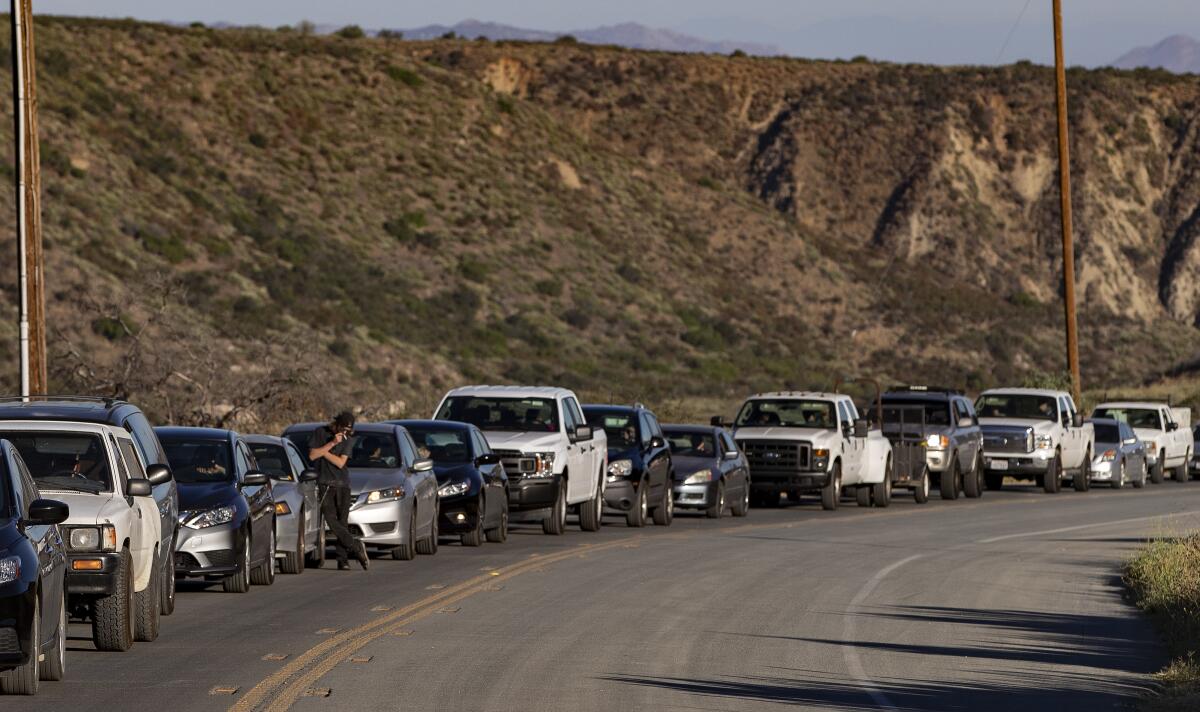
The deluge roared down roadways and overwhelmed culverts. It turned parts of Highway 243 — which runs north out of Idyllwild and joins Interstate 10 in Banning — into a river. Large sections of Highway 74 east of Hemet also collapsed, though another section of the road — one running south and then east, toward the Coachella Valley — remained intact.
That section of Highway 74 has allowed visitors from the Palm Springs area and points south, including San Diego, to reach Idyllwild unfettered. It has also become the main alternative entryway into town.
The stretch of the same highway into Hemet reopened on a limited basis in April, with escort vehicles required to guide traffic during limited hours — weekday mornings, nights and weekends.
In community meetings, Caltrans has explained that it is trying to provide as much drive time on the two-lane road as it can, to support local businesses and residents, while still leaving as many hours as possible for work crews.
“You’re getting a new road. We’re not putting a Band-Aid on it. It’s not getting fixed with duct tape and staples.”
— Richard Rusnak, Caltrans geotechnical engineer
Terri Kasinga, a spokeswoman for Caltrans District 8, said the twin projects, totaling $65 million, amount to the single largest emergency repair job she has seen in nearly three decades with the agency. Workers have moved 58,000 cubic yards of soil and nearly 10,000 cubic yards of rock. The earth alone would be enough to fill more than 1.5 million garden-store-sized bags of soil.
The California Department of Transportation has pledged to have the Hemet-Idyllwild route open 24 hours a day (though initially only with escort vehicles) by Labor Day. Highway 243 will remain closed until until sometime in 2020, Caltrans says.
Most residents voice support for the transportation agency and road crews.
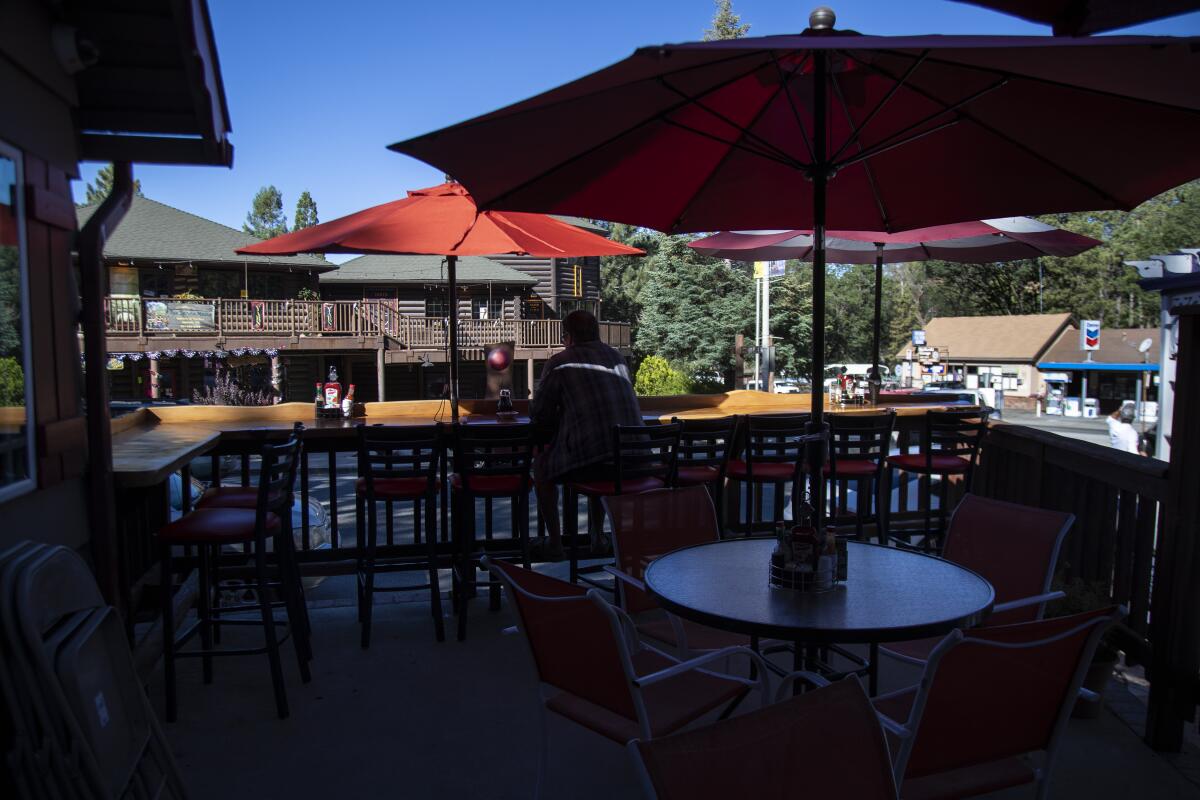
“I would like to say they are working too slow, but I don’t want them to slap it together, where it’s not fixed right,” said Edwina Scott, former executive director of the Mountain Communities Fire Safe Council, a nonprofit that educates the public about fire safety.
State officials say the work has been prolonged for good reason. The drainage system and road beds underlying the highways had not been improved in some locations for more than half a century.
“You’re getting a new road,” Richard Rusnak, a Caltrans geotechnical engineer, told 400 people at a June public hearing. “We’re not putting a Band-Aid on it. It’s not getting fixed with duct tape and staples.”
Panchal says occupancy at his Idyllwild Bunkhouse has declined from 42% to 26% since the Valentine’s Day deluge. Edmund Yang of the upscale Gastrognome restaurant, in the heart of the Idyllwild village, said receipts have plunged 50%. At Leanna’s Idyll Awhile Bistro, business is reportedly down 60%.
Leanna Lee was in escrow to buy the wine bar — once one of Idyllwild’s most popular hangouts — when the roads went out. Since then, she has seen a photo shop and motorcycle accessory store shut down in the adjoining retail center, while a third business is now open just five days a week.
“If people aren’t shopping next door, then they aren’t stopping with us,” Lee said Tuesday as she tended to a mostly local crowd. “It has been difficult.”
Riverside County has responded with an ad campaign, including electronic billboards urging consumers to “Escape to Idyllwild” and assuring them that Highway 74 is open on weekends. “Some customers told me they saw this or heard the news on TV and they were here to support the business,” said Anne Stroud, owner of the Red Rabbit Boutique. “That was so nice.”
Regulars and many tourists have figured out that Idyllwild is still open for business. But not everyone has gotten the word about the road restrictions.
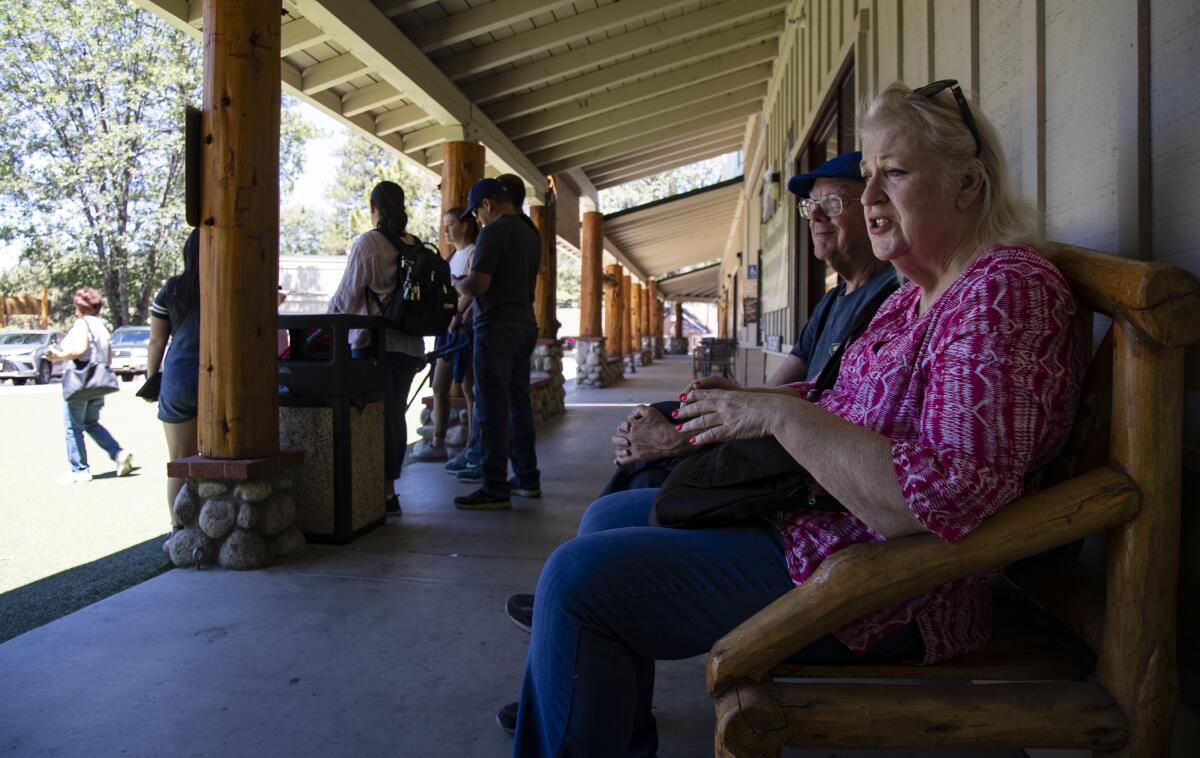
Karen Bowen and Gary Burington were on their first weekend getaway together and never saw a late email from their rustic inn about the preferred route. They missed the 8 a.m. cutoff for the escort car up Highway 74. Then they got poor directions at the bottom of the hill, turning their two-hour drive to nearly five.
“We picked this place because it’s a short drive. And it ended up being a super-long drive,” Bowen said. But the two retirees, arm-in-arm on a shady bench near the town square, soon adopted an Idyllwild state of mind. Said Bowen, “We told ourselves, ‘This is beautiful, who cares?’ ”
Getting off the mountain to some destinations remains challenging.
The head of one local nonprofit quit her job rather than face four hours on the road daily. Art teacher Alexis Tunney’s easy cruise down 243 to a middle school in Banning now takes 1½ to 2 hours each way. She struggles to get to a second job at a wine tasting room in Idyllwild and didn’t have enough energy left to get her 15-year-old son to summer wrestling practice, two hours away.
“I am just running all the time,” Tunney said. “I try to enjoy the scenery but ... my nerves are just fried. It’s soul-sucking.”
The town’s merchants have found that day-trippers are the most likely to stay away, figuring that a longer drive might not be worth it. With less foot traffic, many businesses have shortened their hours or even shut their doors for a day or two midweek.
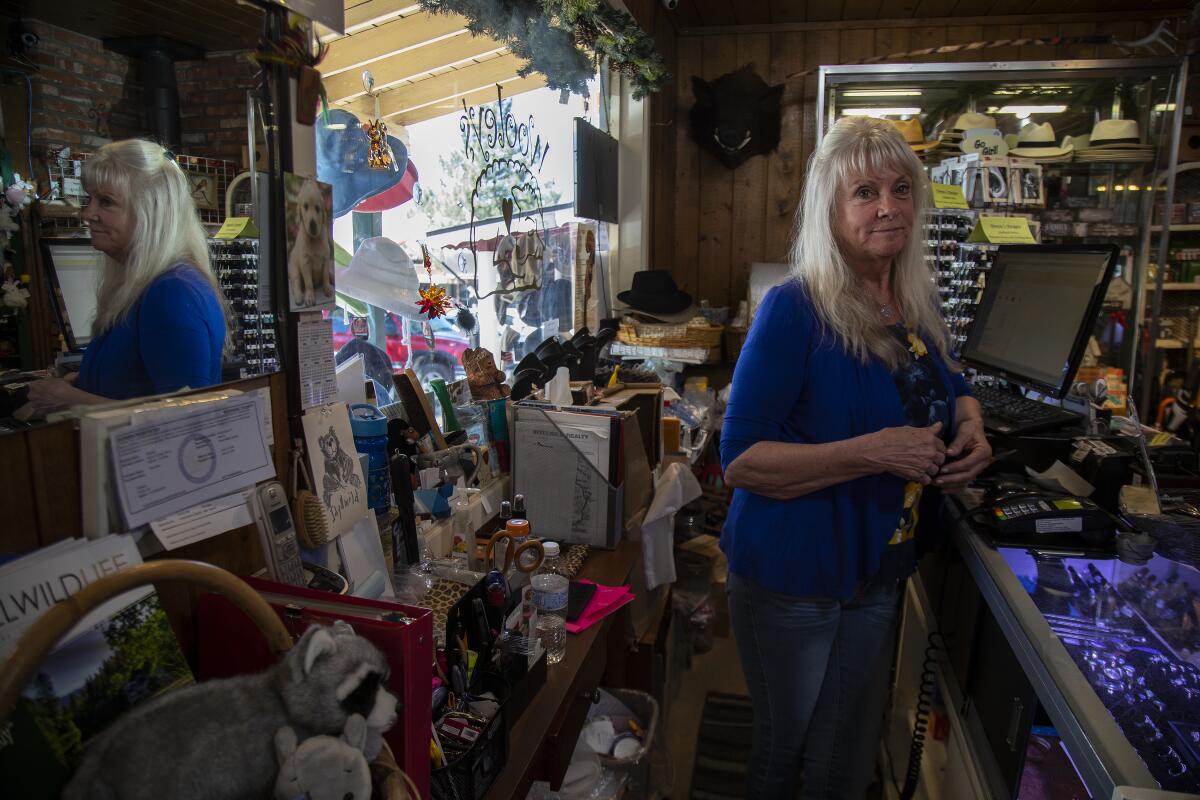
Idyllwild Bake Shop & Brew, in the heart of town, trimmed a staff of 13 to six. Paul and Katie White have taken second jobs, he in construction and she as a bank teller, to make ends meet and leave enough work for their remaining staff.
“We have a lot of time and money invested in this,” said Paul, a former Marine. “So we are not in a position to throw in the towel.”
Many locals felt they dodged catastrophe last July, when an arsonist set the Cranston fire, which skipped to the edge of town, taking five homes before it was turned away. Any doubt about the menace in California’s mountains disappeared a little more than three months later, when the Camp fire destroyed most of Paradise and killed 85 people.
Like the Butte County town, Idyllwild is “an older, retired, second-home community, and they are worried about being able to get out if there is a problem,” said Michael Feyder, president of Mountain Disaster Preparedness, a volunteer readiness group for the area. “I understand that concern.”
Some locals called the possibilities “unnerving,” even “terrifying,” and real estate agent Dillman choked back tears, reflecting on Paradise’s suffering.
But Idyllwild Fire Chief Mark LaMont said at the June town meeting not to worry, that evacuation plans were in place. Pressed for details, LaMont suggested that the plan would not be publicly released, as it might abet a future arsonist, looking to inflict maximum carnage.
Many in the community seemed to accept the chief’s reticence, though others are asking questions and filing California Public Records Act requests, desperate to learn more.
At the Red Kettle, just off the town square, Dillman, who arrived in the 1970s to go rock climbing and essentially never left, is finishing her breakfast, beneath a wall of aphorisms and one-liners. A plaque above her head reads, “Put your big girl panties on & deal with it!”
She says she had every intention of doing just so, adding: “We are surviving and we are going to keep on surviving. This is not going to take us down.”
More to Read
Start your day right
Sign up for Essential California for news, features and recommendations from the L.A. Times and beyond in your inbox six days a week.
You may occasionally receive promotional content from the Los Angeles Times.
